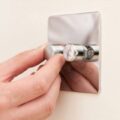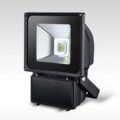Like many products on the market, there are good LED light bulbs and not so good ones. So as well as choosing the right bulb, you also need to choose a good bulb! Before you place your order, you need to do a bit of research.
There are LED light bulbs for a range of lighting uses which include: GU10 LED for spotlights, B22 LED (a standard ‘twist and lock’ bulb) and strip light LED light bulbs for ambient lighting.
To start with, you must have the fitting, voltage, light output and physical size information to ensure you get the right bulb. This can be a daunting task as there are so many variations. For example: the MR11 LED is a smaller version of MR16.
Next, you can see which manufacturers are selling the right bulb for you. The global brands such as Philips, Aurora and GE (General Electric) are often the most expensive options – their prices must support large corporate headquarters and huge advertising budgets.
It’s always worth considering the smaller companies who sell their own branded bulbs – just because they’re cheaper, doesn’t mean the quality isn’t every bit as good.
Very often the latest advances and innovations come from the smaller companies, with the more ponderous global brands taking time to catch up.
Have a look at the LED bulb or it’s illustration – sometimes there are clues to the quality of the product. Older LED technology, for example, needs to use lots of small LED light bulbs (anywhere up to 80) to produce enough light.
It’s better to choose a modern 3 x 1W or SMD 5050 bulb. Have a look to see if the bulb has a glass front cover over the LED light bulbs – if the bulb doesn’t have this, it can be a sign of corner-cutting and poor quality manufacturing.
Who is the vendor…. is it someone you can trust? If they are a reputable company their website is likely to look professional, have information about their company (such as the registration and VAT numbers), and provide full address and contact details (beware of just a mobile phone number).
Have a look at their Terms and Conditions so you understand their warranty and returns procedures. Finally, check there is enough information on the website about the bulbs so you can be sure of ordering the right one, or an expert you can call.
You’re probably ready to pay for your purchase now. You can expect a reliable vendor to be using more than just PayPal to take your money. The problem with PayPal is it’s very easy to set up – there are no real checks.
Payment systems such as RBS, Barclaycard, Sage Pay, Card Save (and others) require more information from a company before they are accepted.
Were you thinking of buying from eBay? Be very careful to check the trading history and feedback of the vendor before parting with your cash. And quite often, products on eBay are more expensive anyway!
Generally speaking, if the bulb looks like a steal, or is too good to be true… it probably is, and you will have wasted both time and money.
Date: June 10, 2011
Tags: bulb choose guides led
There are LED light bulbs for a range of lighting uses which include: GU10 LED for spotlights, B22 LED (a standard ‘twist and lock’ bulb) and strip light LED light bulbs for ambient lighting.




